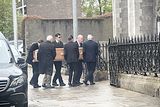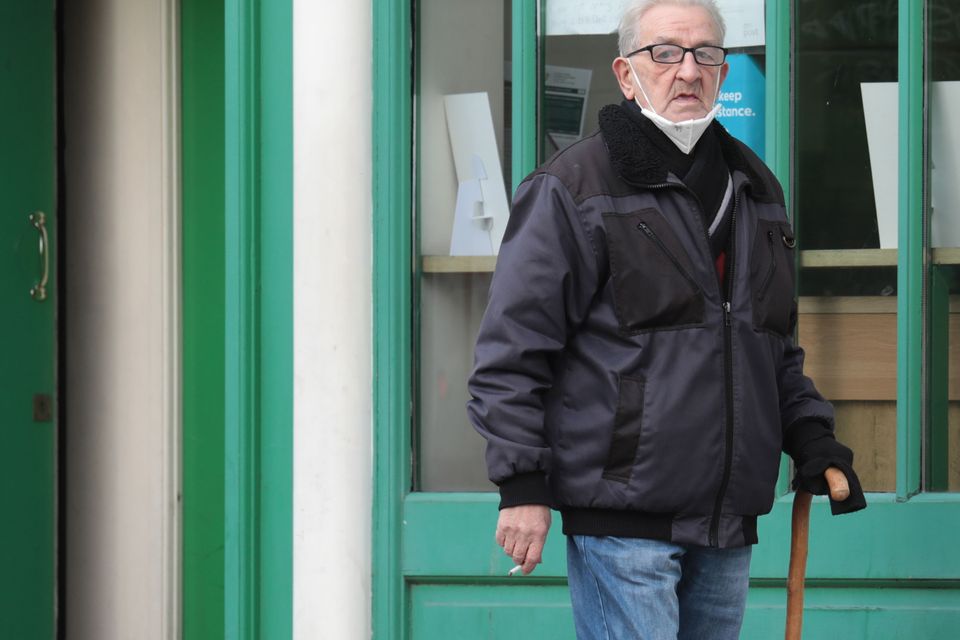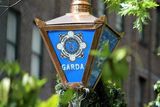Twenty mourners turn out for funeral of Tony Felloni in Dublin


Tony Felloni’s funeral mass took place in Dublin this morning, in the heart of the community he blighted with heroin, as just 20 mourners gathered to pay their respects.
A hearse carrying the remains of Felloni, one of Ireland’s most notorious criminals, arrived outside St Saviour’s Church on Dominick Street in the north inner city shortly after 10am.
Two black mourning cars and a single white jeep that followed were sufficient to carry the mourning party in its entirety.
During a short ceremony lasting just over 20 minutes, the mourners - led by Felloni’s daughter Regina - were told they had gathered “to pray for him to rest in eternal peace”.
No eulogy was read out during the mass for the notorious criminal.
As the funeral ended, Felloni’s casket was wheeled out of the church to The Godfather theme song.
Emerging from the church, Felloni’s family were confronted by gathering clouds that turned to driving rain as his remains were taken from the city for the final time.
Nicknamed ‘King Scum’, Felloni died aged 81 last week.
The funeral of Tony Felloni took place on Dominick Street this morning
He earned the nickname as one of Ireland's leading heroin traffickers in the 1980s and 1990s.
Heroin had become the scourge of inner-city Dublin and Felloni had no shame about how he made his money.
Even in the 1960s, he exploited young naive women trying to make their way in Dublin, getting them drunk, taking compromising photos and extorting their wages from them.
As a burglar and sneak thief, he spent a lot of his life behind prison bar before getting into the drugs trade.
He fulfilled Christy ‘Bronco’ Dunne’s infamous prediction: “If you think we were bad wait ‘til to see what’s coming behind us.”
Originally from Lower Dominick St, Dublin, Felloni was blamed for making the capital's heroin problem in the 1980s a lot worse.
The convicted wife-beater was considered by gardaí to be a key dealer for two decades and was one of the first major criminals to be targeted by CAB after it was set up.
Today's News in 90 seconds - 30th April 2024
The Criminal Assets Bureau spent 14 years chasing his money and property eventually taking almost €500,000 from him.
Despite being involved in importing large quantities of the drug, he was also known to sell bags of heroin directly to addicts from his family corporation flat, not willing to share any profits.
He didn’t even care about the effects his drug dealing had on his own family with his children falling victim to the drug.
During Felloni's trial for heroin dealing in 1996, it was heard how he used some of his children in his drug dealing business and introduced them to the drug.
Tony Felloni pictured near the Four Courts in 2017
His brazen activities, having been caught three times while on bail, were also a factor in the referendum vote to change bail laws.
He was sentenced to 20 years which he mostly served in Portlaoise Prison.
At the time, it was considered one of the toughest sentences handed down for drug dealing and upheld on appeal.
Behind bars he was close to John Gilligan, also serving a lengthy sentence for drug dealing at the time.
On his release in January 2011, there was nobody there to meet him when he left Mountjoy Prison Training Unit and he was driven into the city centre by a probation worker before fleeing into Temple Bar.
He was effectively homeless and for a while stayed with a son in Stoneybatter when it was realised he had nowhere else to go.
He kept a low profile subsequently although his name would crop up when any of his off-spring appeared in court.
His son, Luigi Felloni, was also jailed for heroin dealing in 1996, and his daughter Regina Felloni was jailed for six years and nine months for heroin dealing.
In 2017, the Sunday World photographed him looking old and frail outside the Four Courts where he was trying to sue five prisons for having to ‘slop-out’ during his time inside.
His criminal record began at the Children’s Court in 1959 for theft with dozens following over the next 20 years for assault, demanding money with menaces and burglary.
His first drugs conviction was for four years in the UK in 1981, then 10 years in Ireland for the sale and supply of heroin in Ireland in 1986, before his 20-year sentence imposed in 1996.
Join the Irish Independent WhatsApp channel
Stay up to date with all the latest news


















